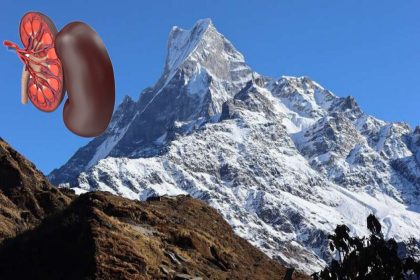This worm can regenerate its body by returning to a state similar to stem cells.
According to RCO News Agency, When it comes to “regeneration”, we see that the human species lags behind several species of animals, and scientists are eager to discover the secrets of such animals, including a marine worm called Platynereis dumerilii, so that they can learn from them.
According to SA, these worms are experts in biological regeneration. They can survive by losing a large part of their body, and now researchers have better insight into how they do it.
They say specialized cells near the wound go into a state of reverting to their original stem cell form and readapting to replace the lost tissue.
“Regeneration” in biology is a process of renewal, repair and growth that makes genes, cells, organisms and ecosystems resistant to sudden natural events or events that cause disruption and damage. All species from bacteria to humans are more or less capable of regeneration.
The regeneration can be complete, in that the new tissue is similar to the lost tissue, or it can be incomplete; In this way, after dead tissue, fibrosis appears. In the most basic stage, regeneration is done by the molecular processes of gene regulation.
Although regeneration in biology is originally related to morphogenetic processes that cause phenotypic plasticity in the appearance characteristics of animals, this process causes animals to repair their cells and maintain their adaptation in their physiological and morphological states.
At higher stages than genetics, regeneration is primarily carried out by an asexual cellular process. Regeneration is different from reproduction.
Regeneration in most species is accomplished by stem cells, which transform into whatever cell type is needed. However, when the terminal segment of the Platynereis dumerilii worm is severed, multiple populations of other cells are recruited to rapidly restore the lost body segment.
This is a process called dedifferentiation and we have seen it in other species as well.
The authors of the study, led by researchers at the University of Vienna in Austria, have identified how these worms essentially reverse the state of other cells so they can be repurposed.
Leonie Adelmann, a molecular biologist at the University of Vienna, says: This means that within hours these cells begin to revert to stem cell status to create a new growth zone as quickly as possible.
Human cell reprogramming is an emerging field of science that promises major advances in medical treatments. The ability to control how cells transform into specialized types can be used to treat diseases and repair significant damage to the body.
This study points to some links between species that we may one day use.
The team used two advanced genetic analysis methods (single-cell RNA sequencing and mosaic transfection) to understand how individual cells behave and switch between states to repair the damage caused to these worms in the lab. This enables them to trace where these cells came from and what type of cell they have become.
“We discovered at least two different populations of stem cells,” says Adelman. One that regenerates tissues such as epidermis and neurons and the other that forms muscles and connective tissue.
Our human bodies naturally have amazing healing properties, but major injuries, disease, and aging can all place limits on human regeneration, the researchers say. The process of dedifferentiation observed here and in other species can help us overcome some of these limitations, especially as methods of scientific analysis improve.
Florian Raible, a molecular biologist at the University of Vienna, says: The concept of dedifferentiation was proposed more than 60 years ago, but researchers at the time lacked the tools to test the idea. We have now developed tools to understand dedifferentiation at the molecular level, providing a foundation for future studies.
This research was published in the journal Nature Communications.
end of message
RCO NEWS
















